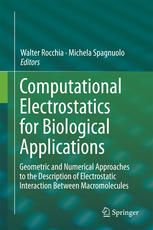

Most ebook files are in PDF format, so you can easily read them using various software such as Foxit Reader or directly on the Google Chrome browser.
Some ebook files are released by publishers in other formats such as .awz, .mobi, .epub, .fb2, etc. You may need to install specific software to read these formats on mobile/PC, such as Calibre.
Please read the tutorial at this link: https://ebookbell.com/faq
We offer FREE conversion to the popular formats you request; however, this may take some time. Therefore, right after payment, please email us, and we will try to provide the service as quickly as possible.
For some exceptional file formats or broken links (if any), please refrain from opening any disputes. Instead, email us first, and we will try to assist within a maximum of 6 hours.
EbookBell Team

4.3
18 reviewsThis book presents established and new approaches to perform calculations of electrostatic interactions at the nanoscale, with particular focus on molecular biology applications. It is based on the proceedings of the Computational Electrostatics for Biological Applications international meeting, which brought together researchers in computational disciplines to discuss and explore diverse methods to improve electrostatic calculations. Fostering an interdisciplinary approach to the description of complex physical and biological problems, this book encompasses contributions originating in the fields of geometry processing, shape modeling, applied mathematics, and computational biology and chemistry. The main topics covered are theoretical and numerical aspects of the solution of the Poisson-Boltzmann equation, surveys and comparison among geometric approaches to the modelling of molecular surfaces and related discretization and computational issues. It also includes a number of contributions addressing applications in biology, biophysics and nanotechnology. The book is primarily intended as a reference for researchers in the computational molecular biology and chemistry fields. As such, it also aims at becoming a key source of information for a wide range of scientists who need to know how modeling and computing at the molecular level may influence the design and interpretation of their experiments.